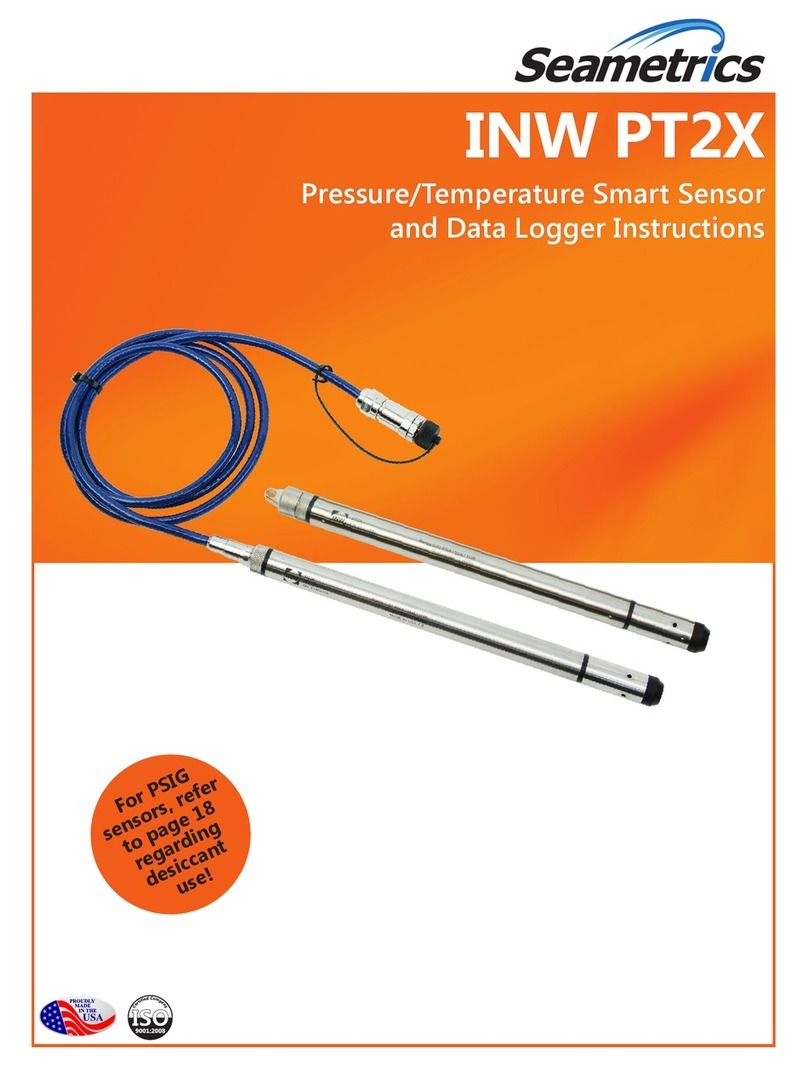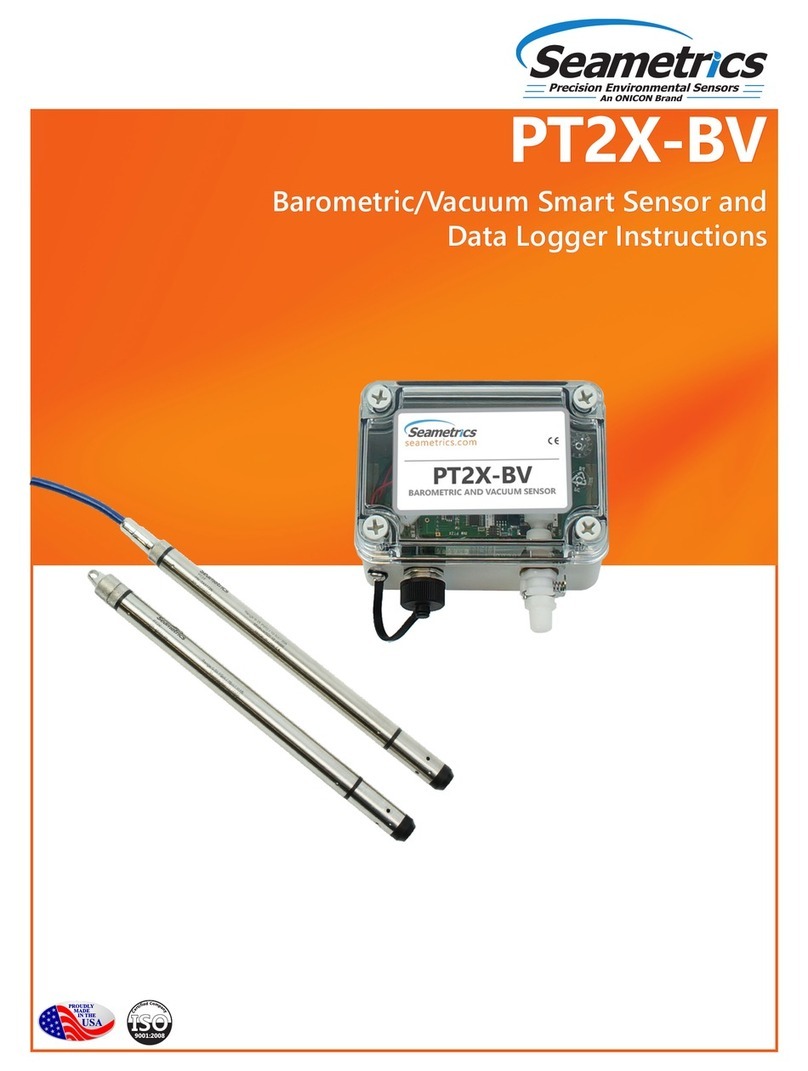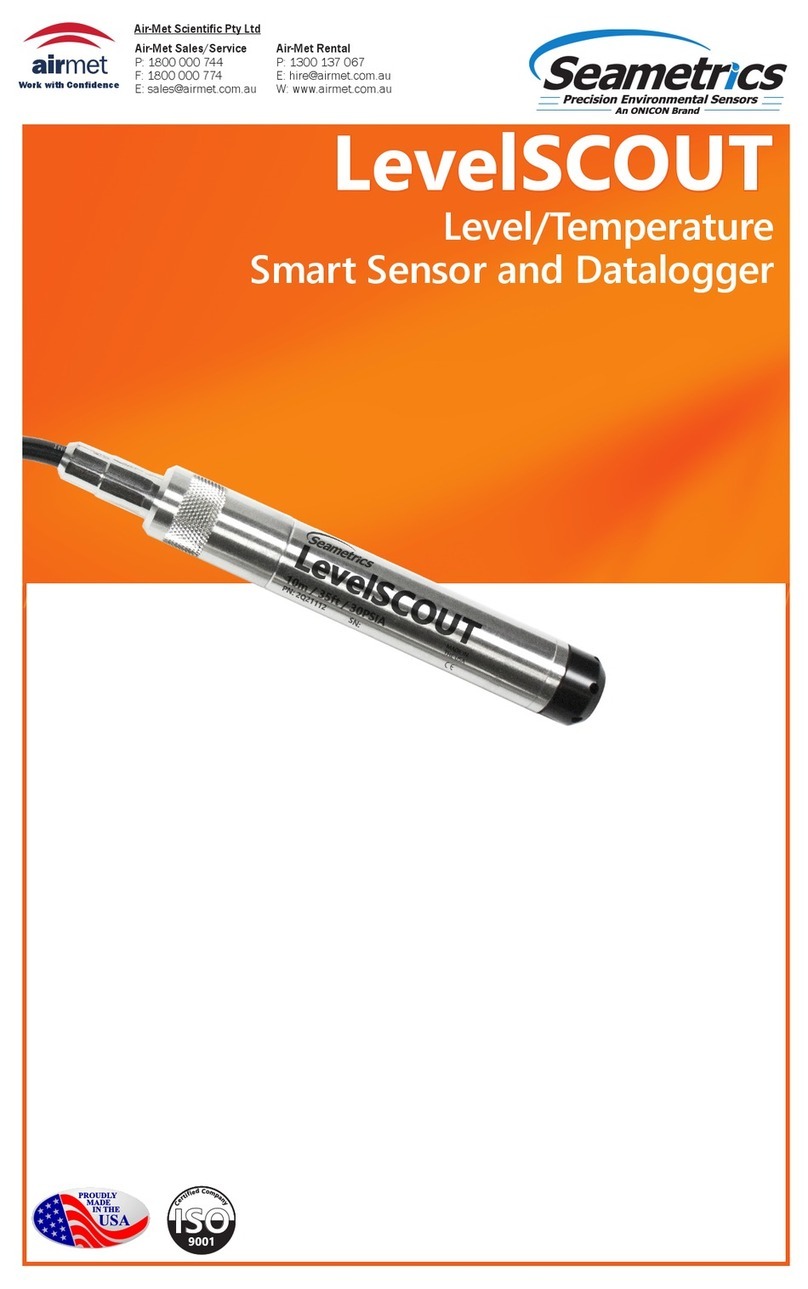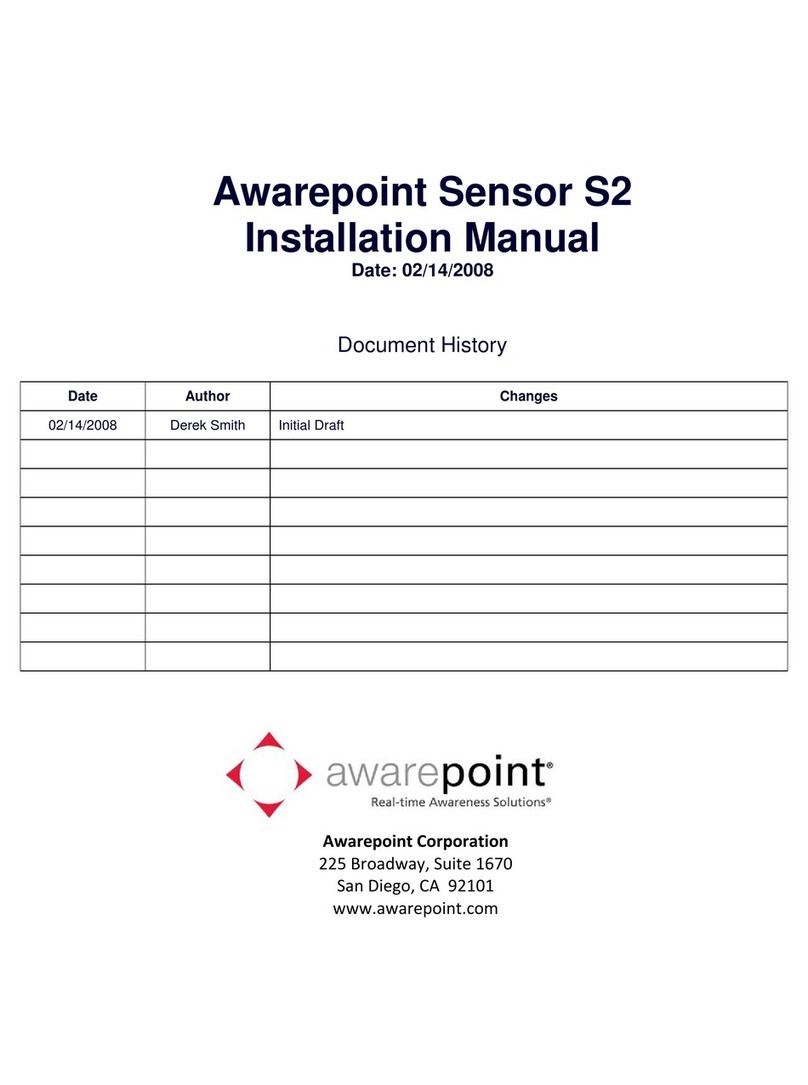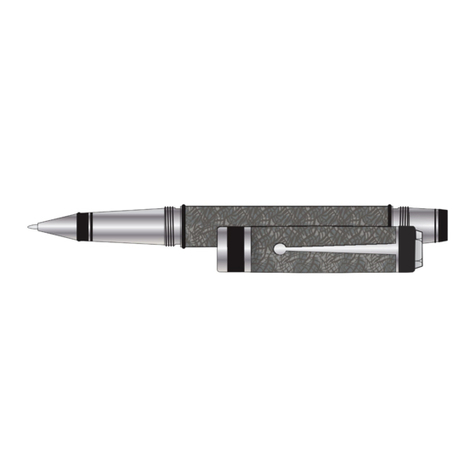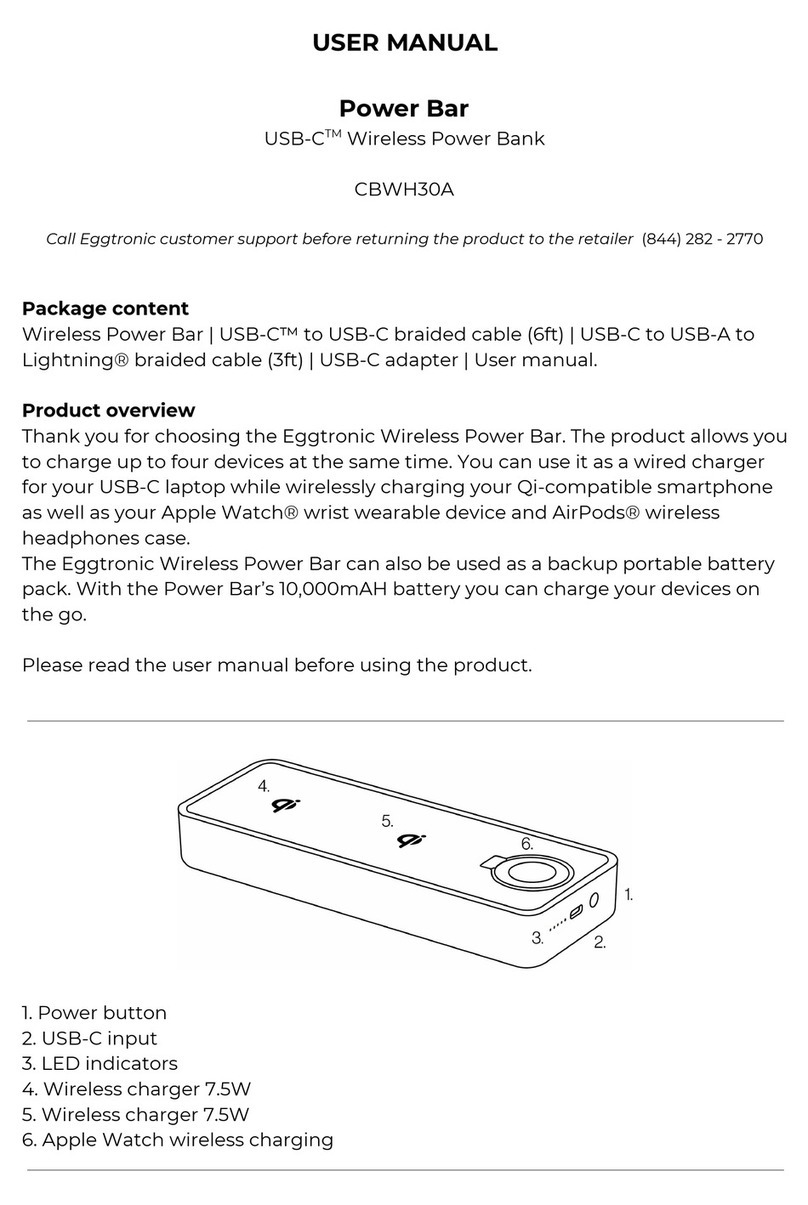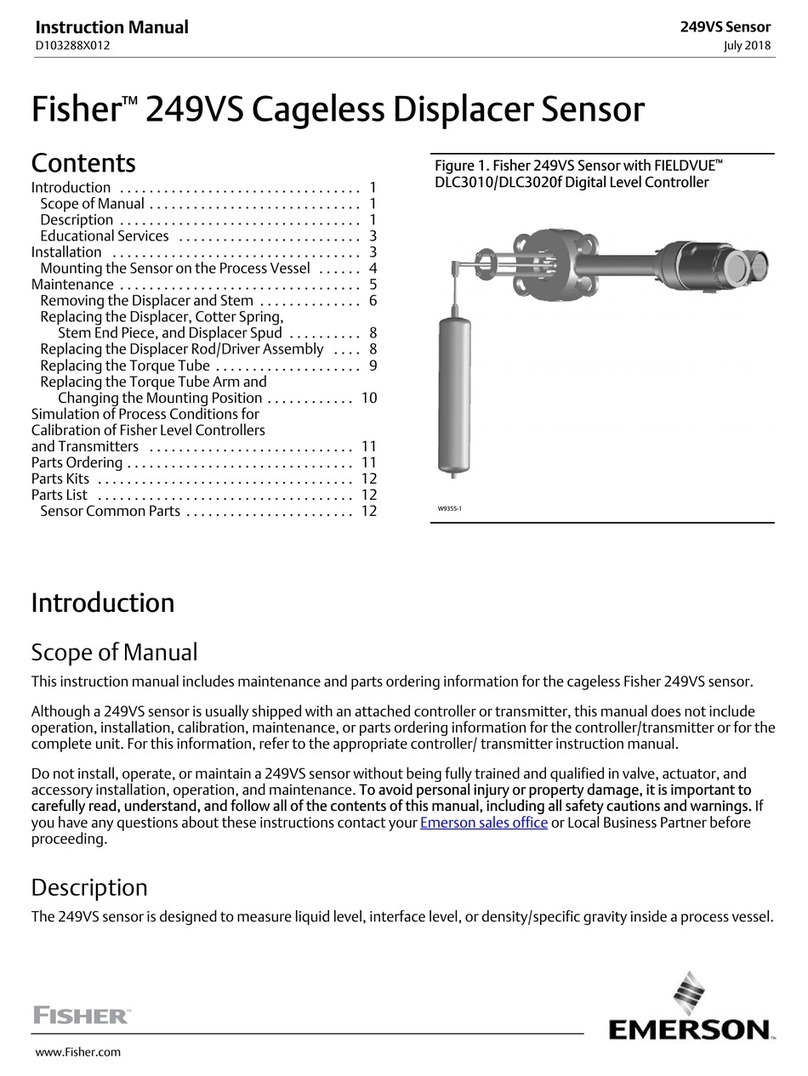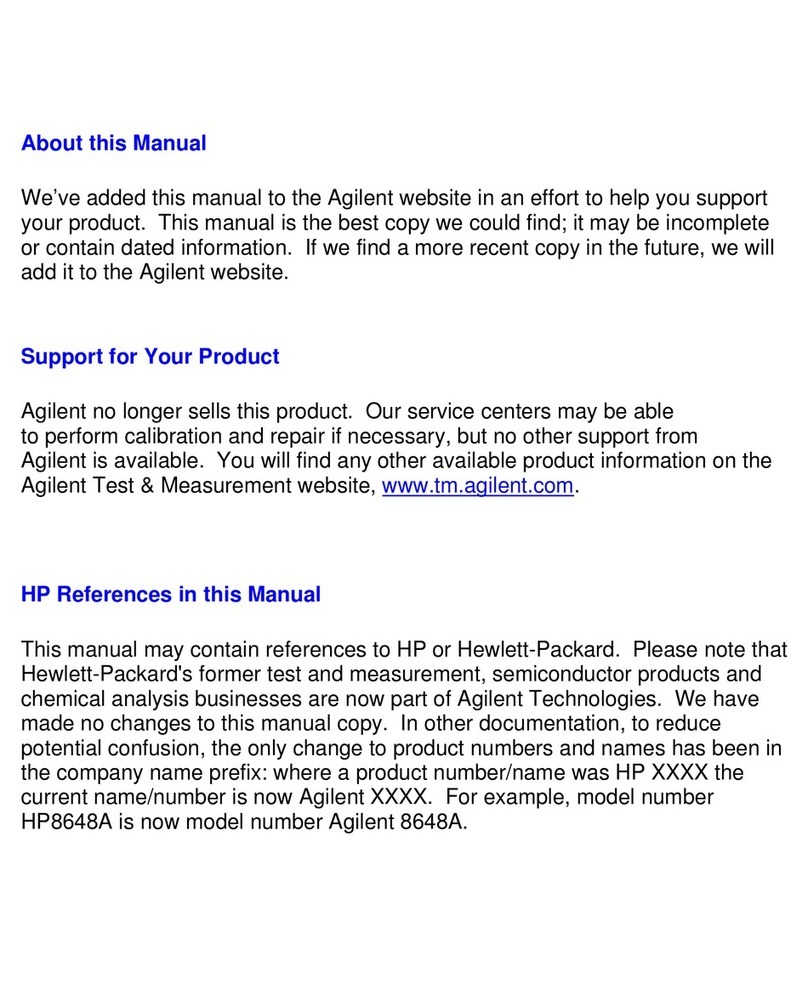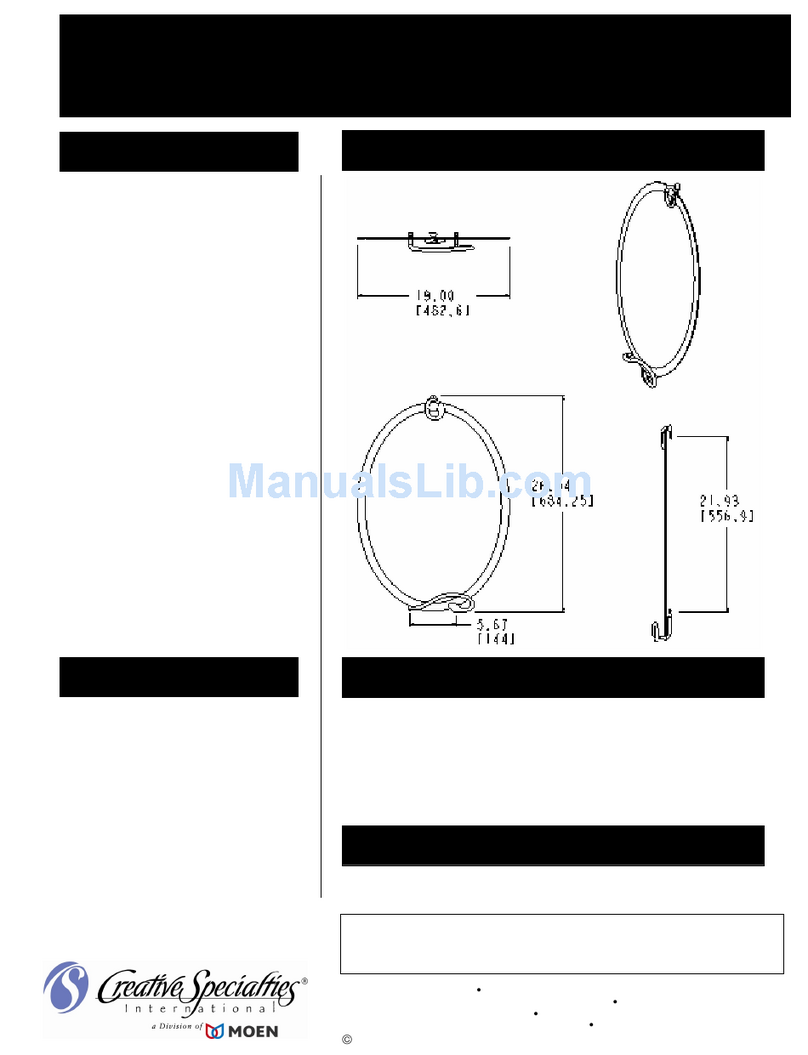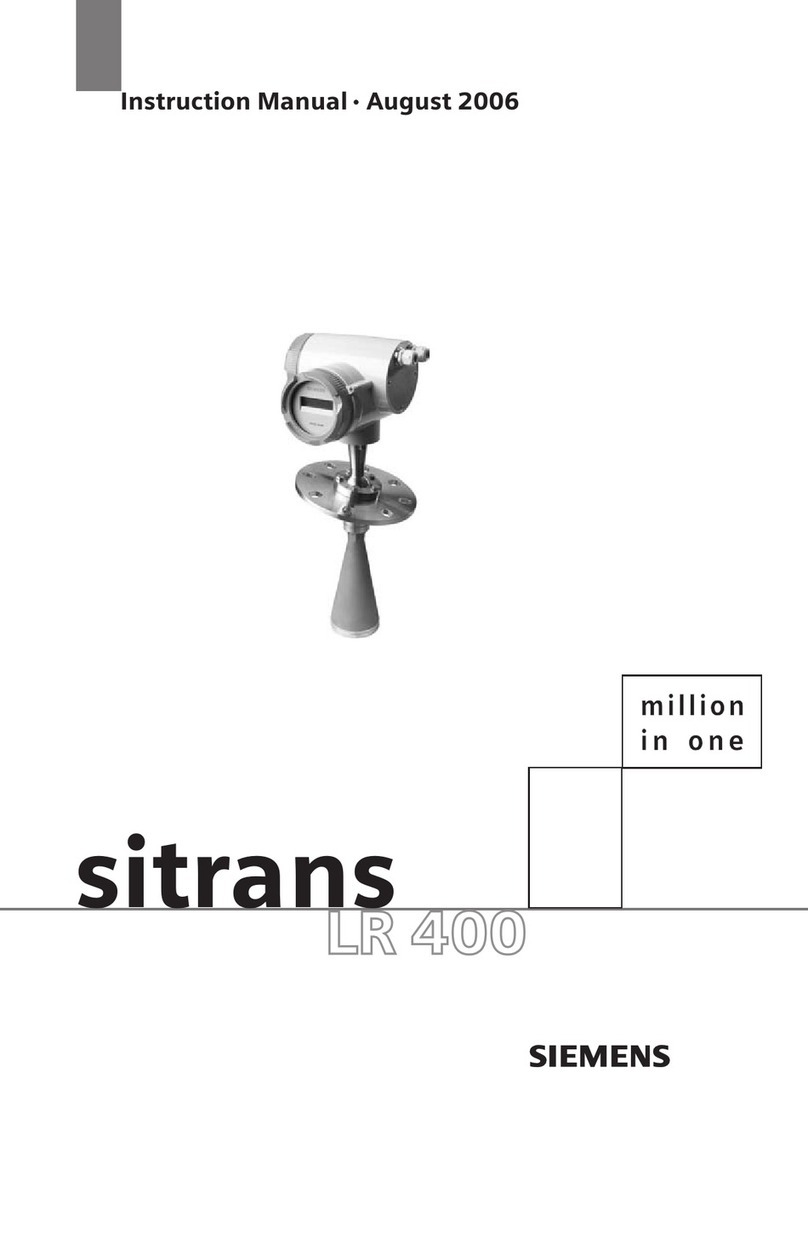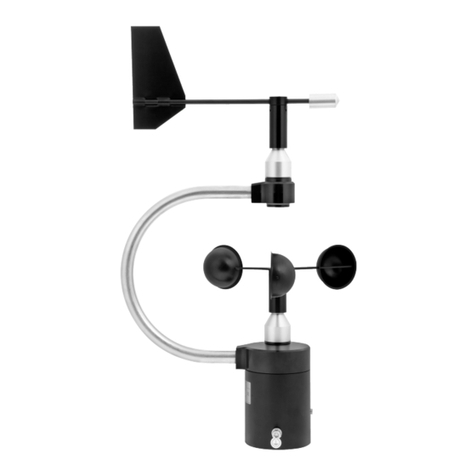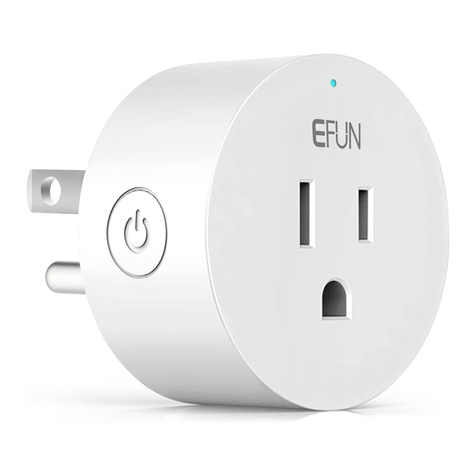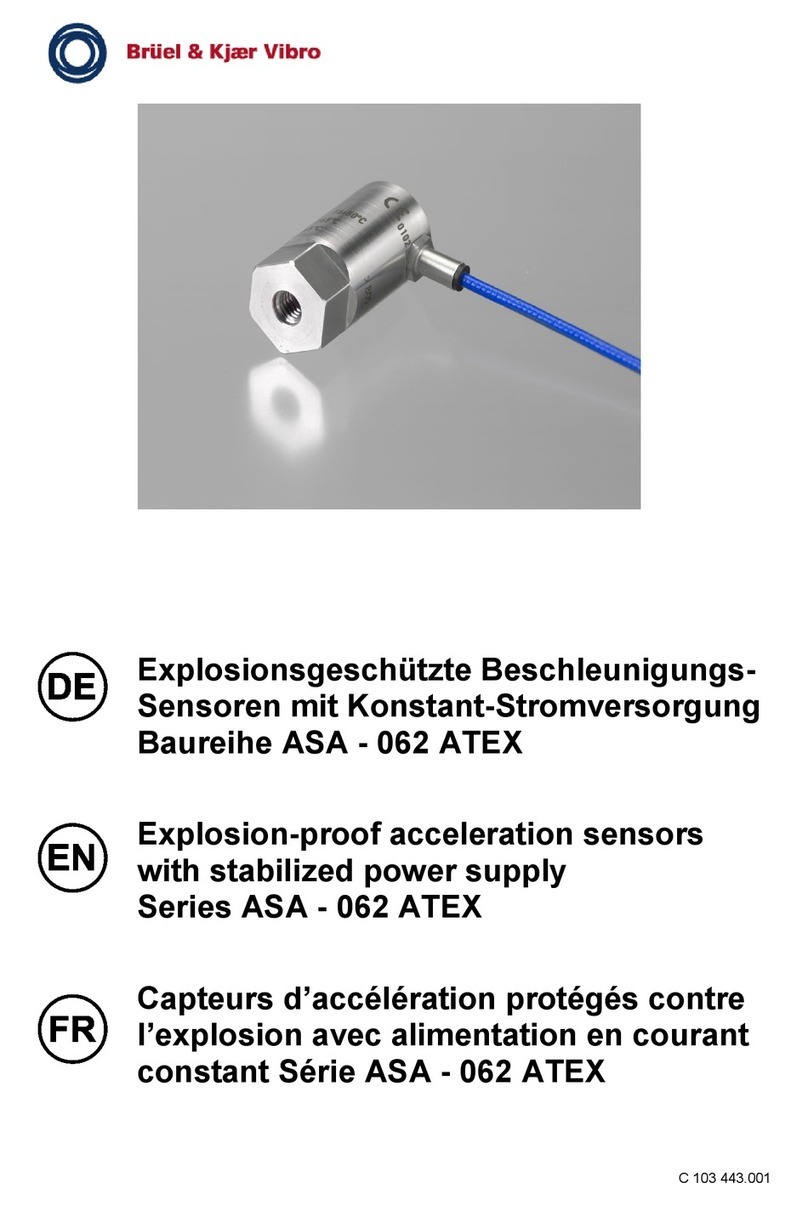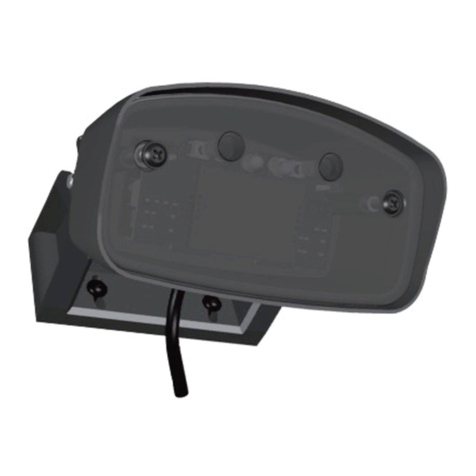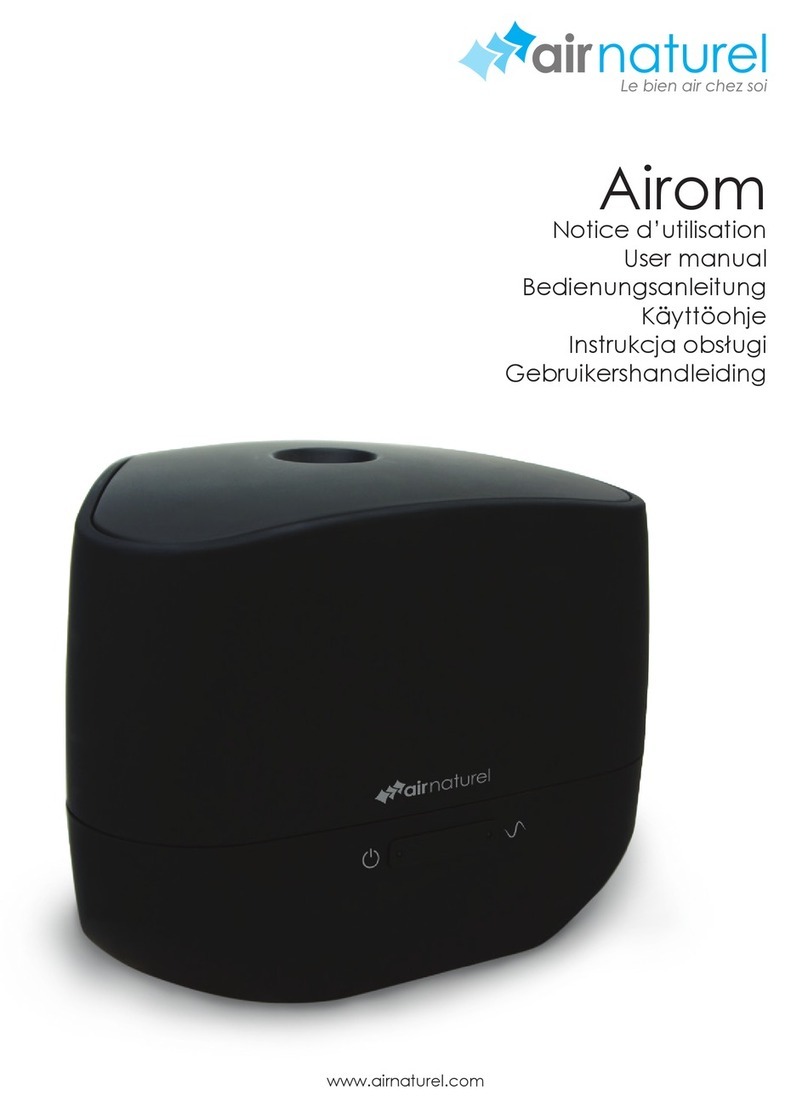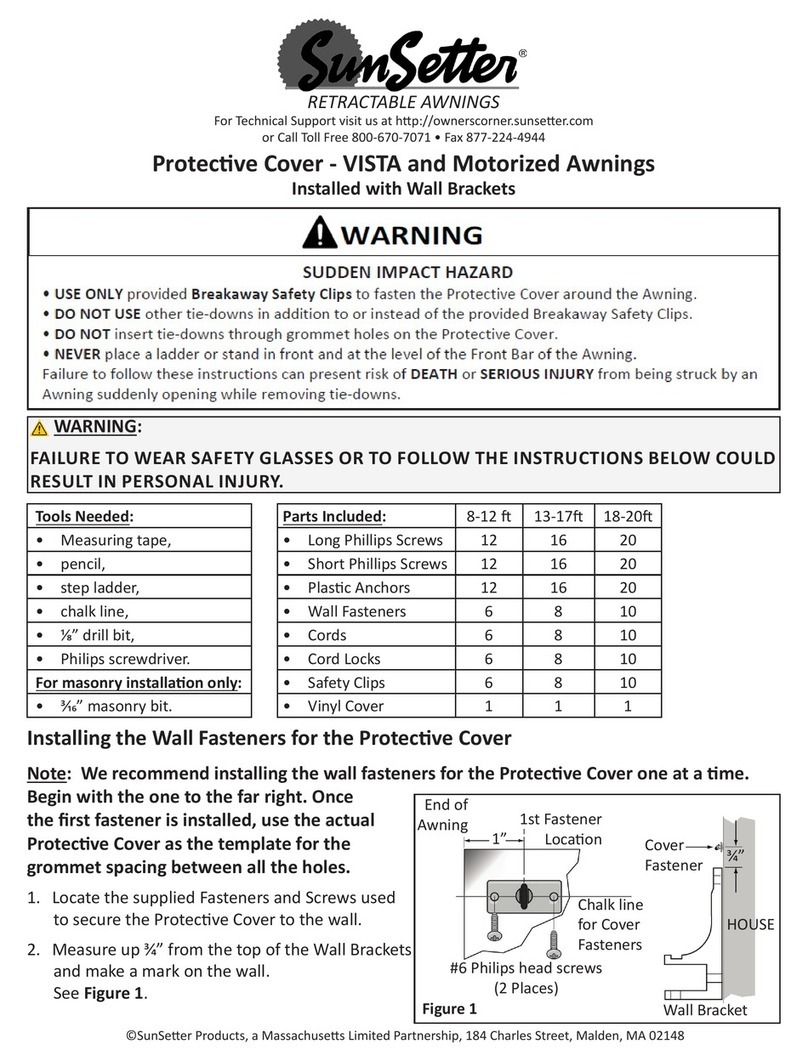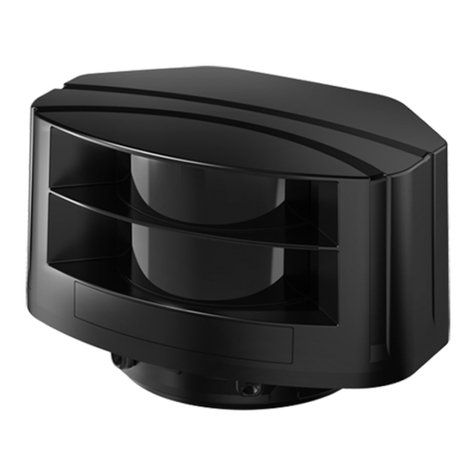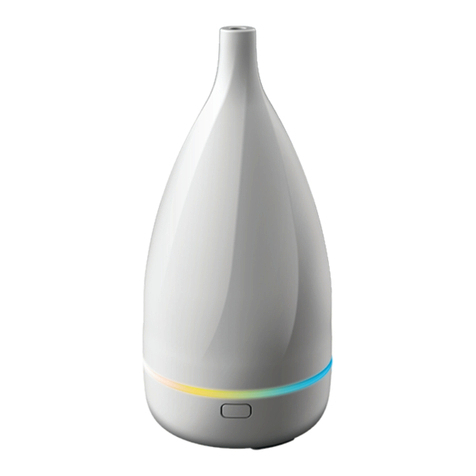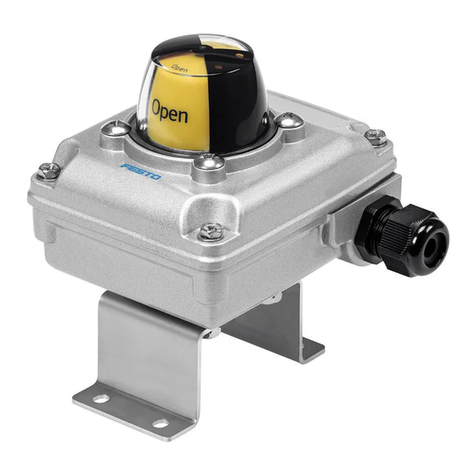Seametrics TX800 Series User manual

TX800-Series
FLOW SENSOR
INSTRUCTIONS
•TX81x
•TX82x
TX800SERIES FLOW SENSOR INSTRUCTIONS
9001:2008
CERTIFIED COMPANY
ISO

TX800 SERIES INSTRUCTIONS
Seametrics • 253.872.0284 • www.seametrics.com
Page 2
General Information
Generial Information, Features .................................................................................................................................Page 3
Specications..............................................................................................................................................................Page 4
Installation
Fitting Installation, Distorted Flows, Meter Installation, Orienting the Meter ....................................................... Page 5
Straight Pipe Recommendations ..............................................................................................................................
Page 6
Full Pipe Recommendations......................................................................................................................................Page 7
Connections
FT430, FT440 ............................................................................................................................................................. Page 8
FT450, Connecting to PLC's ......................................................................................................................................Page 9
Operation and Maintenance
Modularity, Output, Fittings, Minimum Flow, Flow Rate Tables, Calibration (“K-Factor”) ..................................Page 10
Rotor Replacement, Signal Troubleshooting, Sensor Replacement ....................................................................Page 11
Parts List ...................................................................................................................................................................Page 12
Troubleshooting
Problem, Probable Cause, Things to Try.................................................................................................................Page 13
Features ......................................................................................................................................................................Page 3
Specications..............................................................................................................................................................Page 4
Distorted Flows, Orienting the Meter........................................................................................................................Page 5
Straight Pipe Recommendations ..............................................................................................................................
Page 6
Full Pipe Recommendations......................................................................................................................................Page 7
Connection Diagrams..............................................................................................................................................Page 8-9
Flow Rate Table.........................................................................................................................................................Page 10
Rotor Replacement...................................................................................................................................................Page 11
Parts Explosion, Parts List .......................................................................................................................................Page 12
Troubleshooting ........................................................................................................................................................Page 13
TABLE OF CONTENTS
TABLES AND DIAGRAMS

TX800 SERIES INSTRUCTIONS
Seametrics • 253.872.0284 • www.seametrics.com Page 3
Rotor
O-Ring
Cable-Seal Strain Relief
U-Clip Insertion Point
Bearing Housing
Fitting
Features
Caution: U-clip
must be installed
before use.
GENERAL INFORMATION
The TX800-Series are insertion turbine meters designed for use
in 1-1/2" to 8" pipe. High-quality jewel bearings and precision
shafts ensure long life and low friction. Available in 316
stainless steel, brass and PVC, sensor bodies are machined
from solid rod for maximum low-ow performance. The TX800-
Series use special ttings that ensure ease of installation and
correct depth setting in the pipe.
The rotation of the turbine is detected by a non-drag Hall-effect
sensor. Output is a pulse-type square wave, which can be sent
long distances (up to 2,000 feet) without a transmitter. This
signal can be connected directly to Seametrics controls and
displays, as well as PLC's, counters, and computer cards.
Seametrics TX800 meters are ideal for chemical proportioning
applications. If no display is required, a simple divider such as
the PD10 provides adjustable pump pacing. For rate and total
display, as well as pump pacing, the FT420 ow indicator can
be mounted directly on the TX800-Series, or remotely on a wall
or panel. The FT415 offers a battery-operated rate/totalizer
where power is not available.
TABLES AND DIAGRAMS

TX800 SERIES INSTRUCTIONS
Seametrics • 253.872.0284 • www.seametrics.com
Page 4
Specications*
Pipe Sizes EX11x/15x: 3” to 10” EX21x/25x: 10” to 48” (up to 72” optional)
Materials Shaft/Fitting 316 SS or Brass
Electrodes Hastelloy
Electrode Cap PVDF
Housing Cast powder-coated aluminum
Valve Assembly (15x/25x only) Bronze (stainless optional) with bronze ball valve
O-Ring (15x/25x only) EPDM
Power Full Power 12-25 Vdc, 250 mA
Low Power 12-25 Vdc, 40 mA average with 250 mA peaks
Flow Range 0.28 to 20 ft/sec (0.08 - 6.09 m/sec)
Fitting Size Required EX11x/21x EX15x/25x
1-1/2” FNPT 2” FNPT
Temperature Ambient 0˚to 160˚F (-17˚to 72˚C)
Fluid 32˚to 200˚F (0˚to 93˚C)
Pressure 200 psi (14 bar)
Minimum Conductivity 20 microSiemens/cm
Calibration Accuracy +/- 1% of full scale
Output Square wave pulse, opto isolated, 550 Hz@20ft/sec 6mA max, 30 Vdc forward
ow standard; reverse ow optional
Empty Pipe Detection Software, defaults to zero ow
Regulatory
GENERAL INFORMATION
*Specications subject to change. Please consult our website for the most current data (www.seametrics.com).

TX800 SERIES INSTRUCTIONS
Seametrics • 253.872.0284 • www.seametrics.com Page 5
INSTALLATION
Fitting Installation
TX800-Series meters require special ttings. The meter tting
must rst be installed in the pipeline. Straight pipe of at
least ten times the diameter upstream of the meter and ve
diameters downstream is strongly recommended in order to
achieve proper accuracy. These are minimum values. As the
diagrams on the the next page will show, you may need more
straight run under specic adverse circumstances.
If you can’t provide enough run to smooth out the turbulence
caused by valves, ttings, and changes in direction, some
decrease in accuracy may result. This does not mean that
the ow meter’s reading is meaningless, however. In some
applications (for instance, where the ow meter is part of
a control system, operating a valve or controlling chemical
addition), a repeatable reading may be more important than
a highly accurate one.
TX800-Series PVC meter tees are supplied with some
upstream straight pipe. The length provided may be less
than ten diameters upstream and ve downstream. It is not
advisable to connect directly to the end of these ttings with
a ow-disturbing device such as a valve or elbow. If possible,
straight pipe should be added to the upstream end of these
ttings.
Distorted Flows
A PVC tting is usually installed by solvent welding. The
stainless steel and brass meter ttings have female pipe
threads, requiring the appropriate male threaded ttings.
Saddle ttings (size 3” and above) require a hole to be cut in
the pipe. The recommended hole size is 1-3/4”. Caution: Never remove the u-clip retainer when
the pipe is under pressure. Always remove
pressure from the pipe before you attempt to
remove the meter. Removal under pressure
may result in damage or serious injury.
Meter Installation
After the meter tting is installed in the pipeline, the meter
can be installed in the tting. After noting the direction of the
ow arrow, press the meter into the tting as far as it will go.
Retain the meter in place by inserting the U-clip. The pin can
be installed from either side. It may be necessary to rotate the
probe back and forth slightly to start the pin into the slots on the
probe. Slide the pin in as far as it will go.
Horizontal (3 o’clock or 9 o’clock position) is the preferred
installation orientation, since it improves low-ow performance
and avoids problems with trapped air and sediment. (See
Orienting the Meter diagram below.) Bottom (6 o’clock), top
(12 o’clock), and vertical pipe installations are all acceptable if
required by the piping layout.
Orienting the Meter
Fair
Unacceptable if pipe
contains air
Best
Position
Fair
Unacceptable if pipe
contains sediment
Faster flow causes
meter to read high
FLOW
Distorted flow
profile
10X
Diameter Minimum
5X
Diameter Minimum

TX800 SERIES INSTRUCTIONS
Seametrics • 253.872.0284 • www.seametrics.com
Page 6
INSTALLATION
Straight Pipe Recommendations (X = diameter)
5X10X
Reduced Pipe
Two Elbows In Plane
Two Elbows, Out Of Plane
Expanded Pipe
Swirling Flow
Propeller Meter
Partially Open
Buttery Valve
Spiral Flow
5X
5X
20X
20X
30X
20X
5X10X

TX800 SERIES INSTRUCTIONS
Seametrics • 253.872.0284 • www.seametrics.com Page 7
INSTALLATION
Caution: These ow sensors are not recommended for installation
downstream of a boiler feedwater pump where installation fault may
expose the ow sensor to boiler pressure and temperature. Maximum
recommended temperature is 130°F (Plastic), 200°F (Metal).
Full Pipe Recommendations
Better InstallationPossible Problem
Air can be trapped Allows air to bleed off
Better InstallationPossible Problem
Allows air pockets to form at sensor Ensures full pipe
Post-valve cavitation can create air pocket Keeps pipe full at sensor
Better InstallationPossible Problem

TX800 SERIES INSTRUCTIONS
Seametrics • 253.872.0284 • www.seametrics.com
Page 8
CONNECTIONS
POWER
SENSOR
ENGD
+
_
_
+
S
PULSE
OUT 2
PULSE
OUT 1
+
_
+
_
RED
WHITE
BLACK
+
_7-45Vdc
Supply
Flow
Sensor
FT430 Pulse
Pass-thru
Pulse Responsive
Metering Pump
_
+
S
_
+
_
+
_
+
FT430
FT440
POWER
SENSOR
ENGD
+
_
_
+
S
PULSE
OUT 2
PULSE
OUT 1
+
_
+
_
RED
WHITE
BLACK
+
_9-30 Vdc
Loop Power
Supply
Flow
Sensor
FT440
Electronic
Metering Pumps
_
+
S
_
+
_
+
_
+
4-20mA
Device
+
_

TX800 SERIES INSTRUCTIONS
Seametrics • 253.872.0284 • www.seametrics.com Page 9
CONNECTIONS
Connecting to PLC's and other non-Seametric Controls
Red
White
Black
Red
White
Black
Signal
+DC Voltage
Ground
Signal
+DC Voltage
Ground
Figure 1
Figure 2
Input Designed for Current
Sinking (NPN) Devices
Input Designed for Current
Sourcing (PNP) Devices
2.2k Ohm Pull-up
Resistor
NPN
Device
NPN
Device
Red
White
Black
Red
White
Black
Signal
+DC Voltage
Ground
Signal
+DC Voltage
Ground
Figure 1
Figure 2
Input Designed for Current
Sinking (NPN) Devices
Input Designed for Curren
t
Sourcing (PNP) Devices
2.2k Ohm Pull-up
Resistor
NPN
Device
NPN
Device
FT450
POWER
SENSOR
ENGD
+
_
_
+
S
PULSE
OUT 2
PULSE
OUT 1
+
_
+
_
RED
WHITE
BLACK
Micropower
Flow Sensor
FT450 Pulse
Pass-thru
Pulse Responsive
Metering Pump
Current Sinking
Polarity-Sensitive
Lithium C,
3Vdc
Replaceable
Battery
_
+
S
_
+
_
+

TX800 SERIES INSTRUCTIONS
Seametrics • 253.872.0284 • www.seametrics.com
Page 10
OPERATION AND MAINTENANCE
Calibration (“K-factor”)
The K-factor represents the actual number of pulses per gallon
the meter produces during a ow test. This number can be
entered into your electronic control to make it read properly.
If the TX800-Series meter is ordered with a tee tting, it is
factory-calibrated in the tting and the K-factor is indicated
on the side of the tting. For saddle and weldolet K-factors,
see the K-factor calculator located at the bottom of the www.
seametrics.com home page.
Find Your K-Factory Here
10031295
MF81T-P200
K: 53.6
Modularity
Any of the TX800-Series ow sensors can have electronic
modules mounted directly to them, either at the time of order
or by adding an adaptor kit in the eld (part number 102632).
Alternatively, the ow sensor and indicator or transmitter can
be installed remote from each other. The FT420 is an indicating
transmitter (rate, total, 4-20 mA output), and the AO55 is a
blind 4-20 mA transmitter. For data logging, add the DL76. The
FT520, which provides batching and other functions, is suitable
for remote installation.
Output
The output is a current-sinking pulse (square wave) compatible
with many controls in addition to the Seametrics indicators and
transmitters. The most common of these are water treatment
controllers and programmable logic controllers (PLC’s). For
these units, it is sometimes necessary to provide a pull-up
resistor if the controller does not provide for a current-sinking
output. (See the section on “Connecting to PLC’s and other
controllers” before connecting to a non-Seametrics control.)
Fittings
Since the TX800-Series sensors are not adjustable, they must
be purchased with ttings appropriate to the application. The
TX81x is sized for ttings of 1 1/2” to 3”. The TX82x is for ttings
of 4” and 8”. Each tting insures that the ow sensor is installed
at the correct point. Every ow sensor and every tee tting is
wet calibrated. Saddle ttings are normally not wet calibrated,
because they are eld-installed on a pipe. In PVC however it is
possible to order a saddle pre-installed on a standard length of
pipe, in which case the entire assembly is wet-calibrated. For
all other saddles, the K-factor (pulses per gallon) is established
through testing with various standard schedules of pipe and
provided with the saddle.
Minimum Flow
As with any other ow sensor, there is a rate below which the
TX800-Series sensor cannot read. Check the ow rate table
below for the minimum ow rate detectable by the sensor for
a given pipe size.
1½” 2” 3” 4” 6” 8”
Min 2.8 5 11.5 19.8 45 78
Max 190 314 691 1190 2700 4680
Flow Rate (Gallons per Minute) Flow Rate (Liters per Minute)
1½” 2” 3” 4” 6” 8”
Min 10.60 18.93 43.53 74.95 170.34 295.26
Max 719.23 1189 2616 4505 10221 17716

TX800 SERIES INSTRUCTIONS
Seametrics • 253.872.0284 • www.seametrics.com Page 11
Rotor Replacement
It is unusual for a rotor to require replacement due to damage
sustained in normal service. More commonly, the meter is
dropped while it is out of the pipe. Another reason for rotor
replacement is shaft wear after long service. Rotors are easily
eld-replaced.
To install a rotor, follow these steps:
1. Unscrew the threaded bearing housings to expose
the shaft ends. If bearings are being replaced,
back them completely out.
2. Remove the rotor. Put the new rotor in its place.
3. Thread in one bearing housing part way, then the
other. Take care to start the end of the shaft into
the bearing hole before tightening further.
4. Screw in bearing housings until they bottom
Note: Do not use excessive force.
5. Check for free spin. Blowing lightly on the rotor
should result in it spinning rapidly and coasting to a
smooth stop.
Rotor Replacement
Signal Troubleshooting
The ow sensor has only one moving part, the rotor. If this is
turning properly and there is no signal, the magnetic sensor
is not operating properly. To check the signal, apply 12 Vdc
regulated* power to the red (+) and black (-) leads. Set a
multimeter to voltage reading. Put the positive multimeter
lead on the red wire and the negative lead on the white wire.
Slowly turn the rotor. Voltage reading should swing between
+12 Volts and 0 Volts as the rotor turns. If it does not, the
solid-state magnetic sensor is not working properly. Checking
for continuity is not a useful test of these sensors.
*NOTE: An unregulated power supply can exceed max voltage of
micro powered sensor (gray cable) and damage sensor.
Sensor Replacement
It is very unusual for a sensor to require replacement in
normal use. The primary cause of sensor failure is overvoltage
(inadvertent connection of line voltage, for example) or
incorrect polarity on hookup. The sensor is replaced by
removing the strain relief, then threading out the sensor
retainer plug. Remove the entire sensor capsule by pulling
on the cable. The new sensor capsule can then be installed,
orientation is not critical. Replace the retainer plug, and then
replace and tighten the strain relief.
OPERATION AND MAINTENANCE
Caution: Never remove the u-clip retainer when the pipe is under pressure. Always remove
pressure from the pipe before attempting to remove the meter. Removal under pressure may
result in damage or serious injury.
Shaft
Turbine Rotor
Bearing
Housing

TX800 SERIES INSTRUCTIONS
Seametrics • 253.872.0284 • www.seametrics.com
Page 12
OPERATION AND MAINTENANCE
TX800 Series Parts List
1a
8
9
6a
4a
7a
3a
2a
11
15
14
13
12
TX800 Series Parts
White Housing
1a thru 7a
Blue Housing
1b thru 7b
1 Upper housing/
electronics
Contact service
representative
for your specic
model
Contact service
representative
for your specic
model
2 Housing Gasket/Seal 102025 100411
3 Lower housing Not eld
replaceable
Not eld
replaceable
4 Housing screw/washer
kit (4 each)
100414 100414
5Plug, steel (battery units) 100360 100360
6 Strain relief kit, small
(includes 2)
100364 100364
7 Strain relief kit, large
(includes 1) (externally
powered units)
101850 101850
8 Sensor pickup 100508 (Micropower, green cable,
FT450)
100419 (Standard, blue cable,
FT430/440)
9 Sensor retaining screw 100298
10 U-clip, retainer 100154
11 O-ring 100264 (EPDM)
100219 (Viton®)
12 Body See distributor
13 Bearings (includes 2) 103315
14 Rotor assembly 101862
(Kynar®/tungsten carbide)
15 Rotor repair kit (#13 &
#14 above)
101912
(Kynar®/tungsten carbide)
5a
10
Blue Housing
1b
6b
4b
7b
3b
2b
5b

TX800 SERIES INSTRUCTIONS
Seametrics • 253.872.0284 • www.seametrics.com Page 13
TROUBLESHOOTING
Problem Probable Cause Try...
No signal after installation Insufcient ow Reduce pipe size if possible, use different type of
sensor
Bad connections to control electronics Reconnect if necessary
Incompatible control Use different power supply
Add pull-up resistor (see page 9)
Damaged or missing rotor Obtain new rotor and replace (see page 11)
Failed magnetic sensor Replace magnetic sensor
Inaccurate metering Not enough straight pipe between meter
and severe ow disturbance
Move meter away from ow
Wrong K-Factor entered Check K-Factor (see page 10), enter correct
K-Factor in your control
Magnetic sensor failing to pick up each
blade
Replace magnetic sensor and rotor

TX800 SERIES INSTRUCTIONS
Seametrics • 253.872.0284 • www.seametrics.com
Page 14

TX800 SERIES INSTRUCTIONS
Seametrics • 253.872.0284 • www.seametrics.com Page 15

Seametrics • 19026 72nd Avenue South • Kent, Washington 98032 • USA
(P) 253.872.0284 • (F) 253.872.0285 • 1.800.975.8153 • www.seametrics.com LT-65200048r1.1-20161018
10/18/16
This manual suits for next models
2
Table of contents
Other Seametrics Accessories manuals
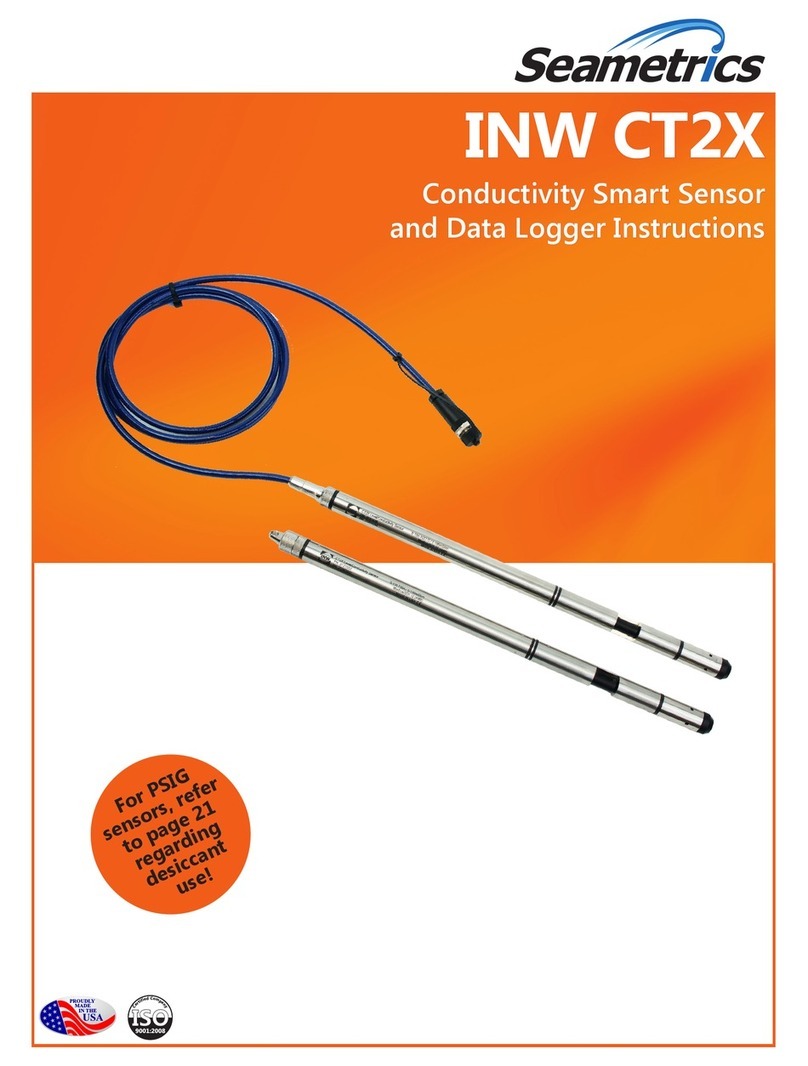
Seametrics
Seametrics INW CT2X User manual
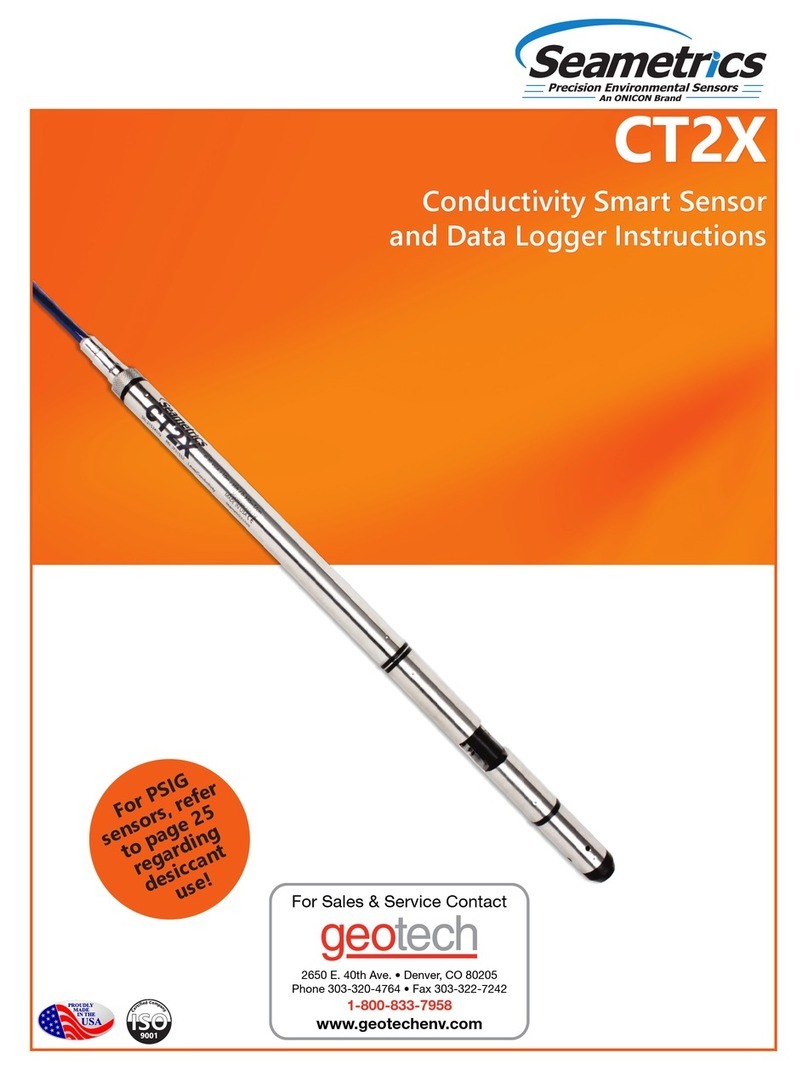
Seametrics
Seametrics CT2X User manual
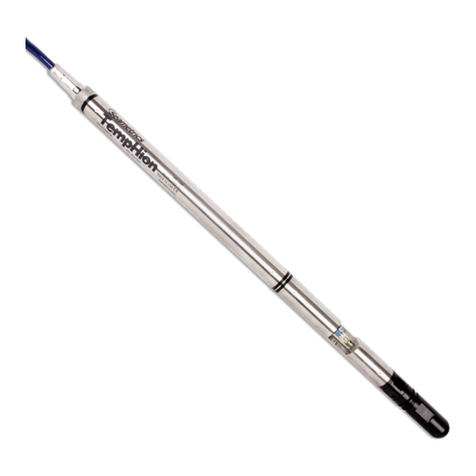
Seametrics
Seametrics TempHion User manual
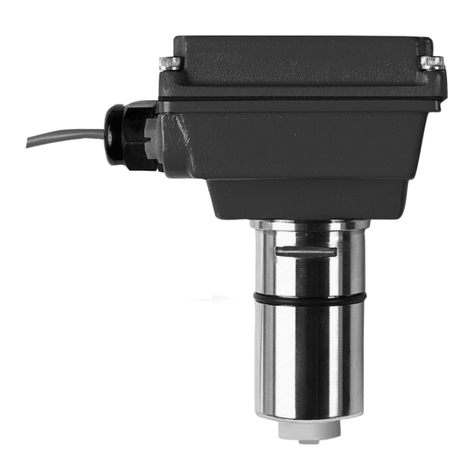
Seametrics
Seametrics EX80 Series User manual
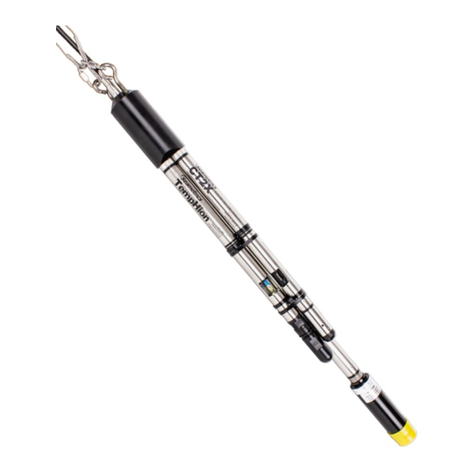
Seametrics
Seametrics Multi-Parameter Smart Sensor User manual
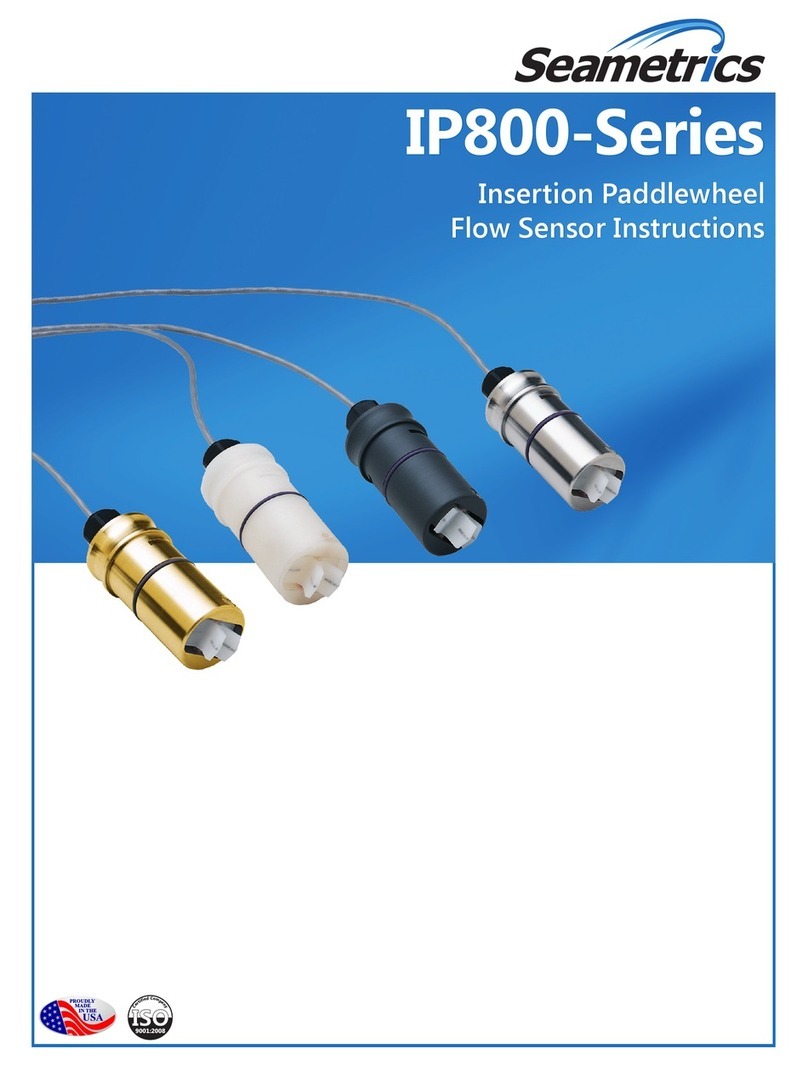
Seametrics
Seametrics IP800 Series User manual
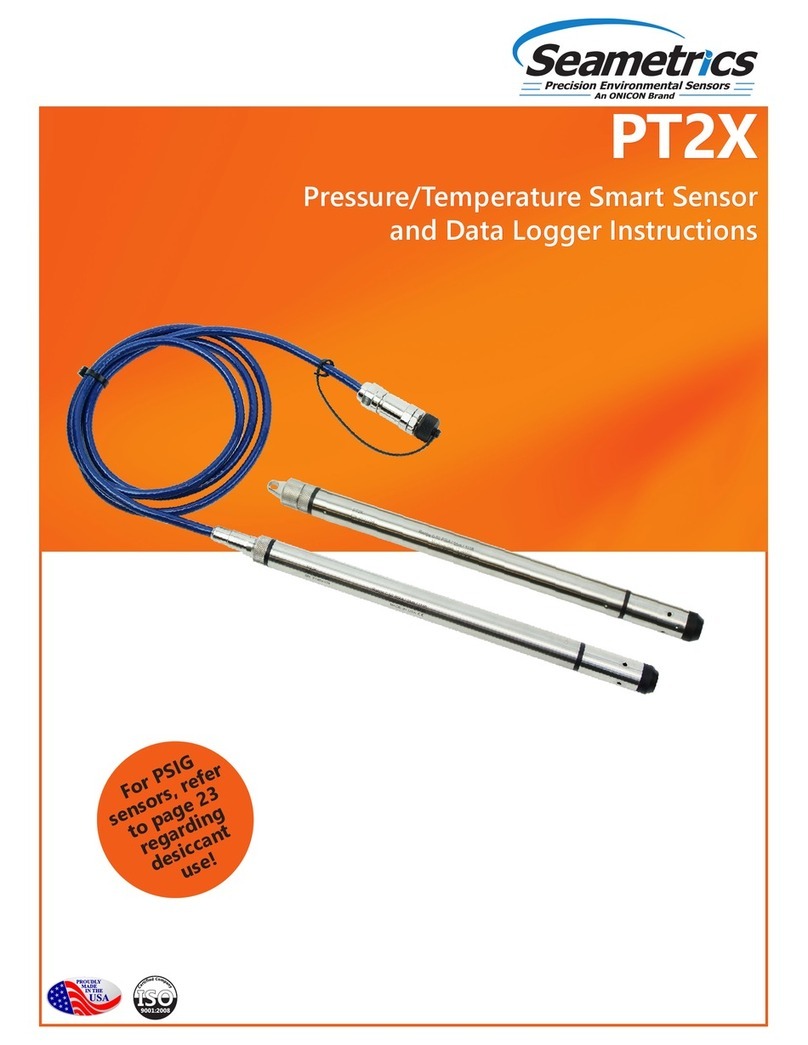
Seametrics
Seametrics PT2X User manual
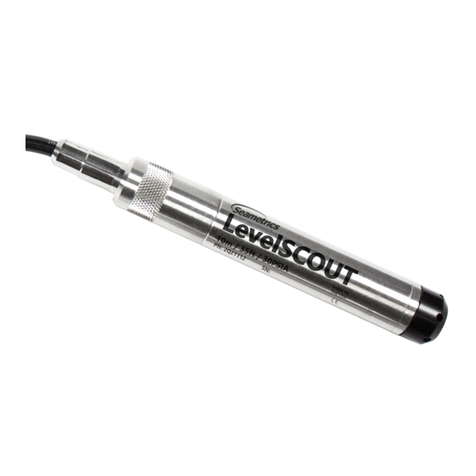
Seametrics
Seametrics INW LevelSCOUT User manual
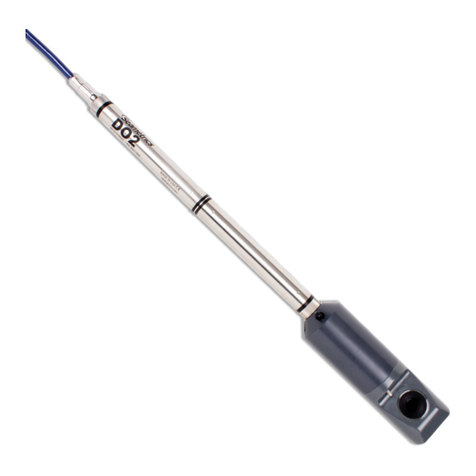
Seametrics
Seametrics DO2 User manual
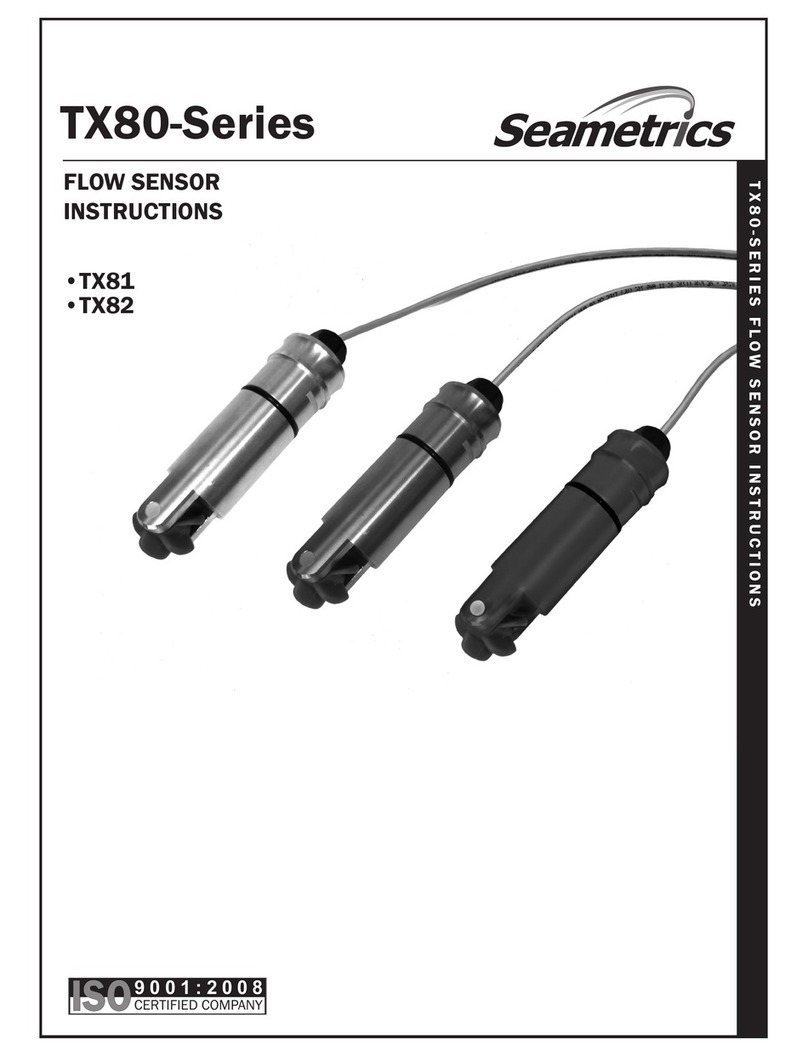
Seametrics
Seametrics TX81 Series User manual
